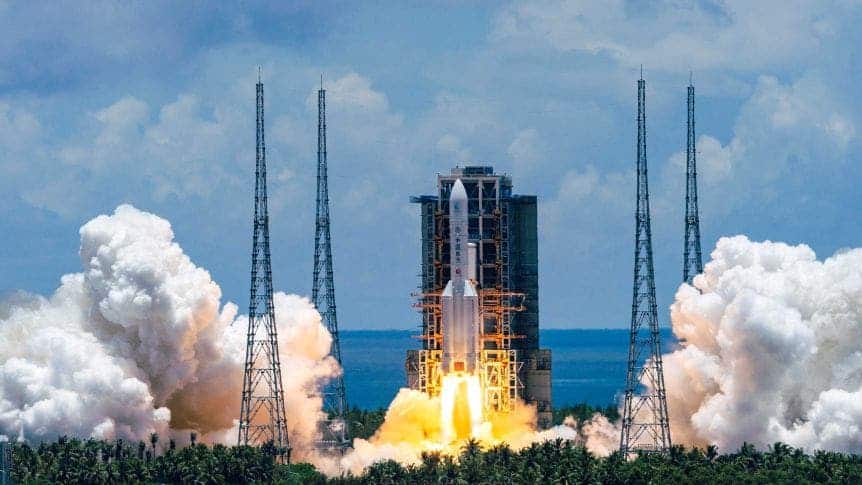After a successful launch from Hainan Island in southern China, a Chinese spacecraft is now on its way to Mars as part of the country’s first attempt to land on the red planet. The mission, called Tianwen-1 (“Questions to Heaven”) should arrive in orbit around Mars in February 2021.

The spacecraft, equipped with a lander, orbiter, and rover, weighs 5,000 kilograms. It blasted off from the Wenchang Satellite Launch Center aboard a Chinese Long March-5 rocket.
This is China’s second attempt to reach Mars, after a failed one in 2011. If successful, it will join the US and Russia amid countries that reached the Red Planet.
“According to the aerospace control center, the Long March 5 Y-4 rocket is in normal flight, and the probe to Mars has accurately entered the preset orbit. I now declare the launch of China’s first Mars exploration mission a complete success,” Zhang Xueyu, the Hainan base commander, told mission technicians.
It’s getting a bit crowded around Mars. Tianwen-1 is just one of the three missions to Mars this year. The United Arab Emirates successfully launched its Hope orbiter a week ago, while the United States’ crafts are likely to launch next week. They are all on close dates because this is the period in which the Earth and Mars are closest together — this is the period in which you want to launch shuttles to Mars.
The Chinese spacecraft is expected to reach Mars in February and spend several months positioning itself for landing. When the time is right, the orbiter will release the lander and the rover into the Martian atmosphere in April, which will touch down close to the Utopia Planitia – a vast plain filled with volcanic rocks, the largest recognized impact basin on Mars and in the Solar System (with an estimated diameter of 3300 km).
The orbiter will loop around Mars for an entire Martian year (1.88 years on Earth), acting as a communication link for the rover, which has a lifetime of around 90 Martian days — the equivalent of some 93 days on Earth.
The mission aims at doing a global survey of the planet, studying its geological structures, surface characteristics, and climate. To do so, the orbiter and the rover carry scientific instruments. These include a magnetic field detector, several cameras, a subsurface radar, and a spectrometer. The radar will help detect the geological structures below the surface of the planet, while the field detector will gain valuable insights into Mars’s past magnetic field
“This is a really ambitious mission-driven by science that represents significant progress in China’s space program, and they should be proud,” David Flannery, an astrobiologist at the Queensland University of Technology in Brisbane, told Nature. “There are a lot of other things that could still go wrong, but so far so good.”
Only the US has managed to run operations on Mars, as the Soviet’ missions landed but failed shortly. Nevertheless, China takes confidence from the successes of its two recent Chang’e Yutu lunar rovers, the second of which made the first-ever soft landing on the far side of the Moon last year.


